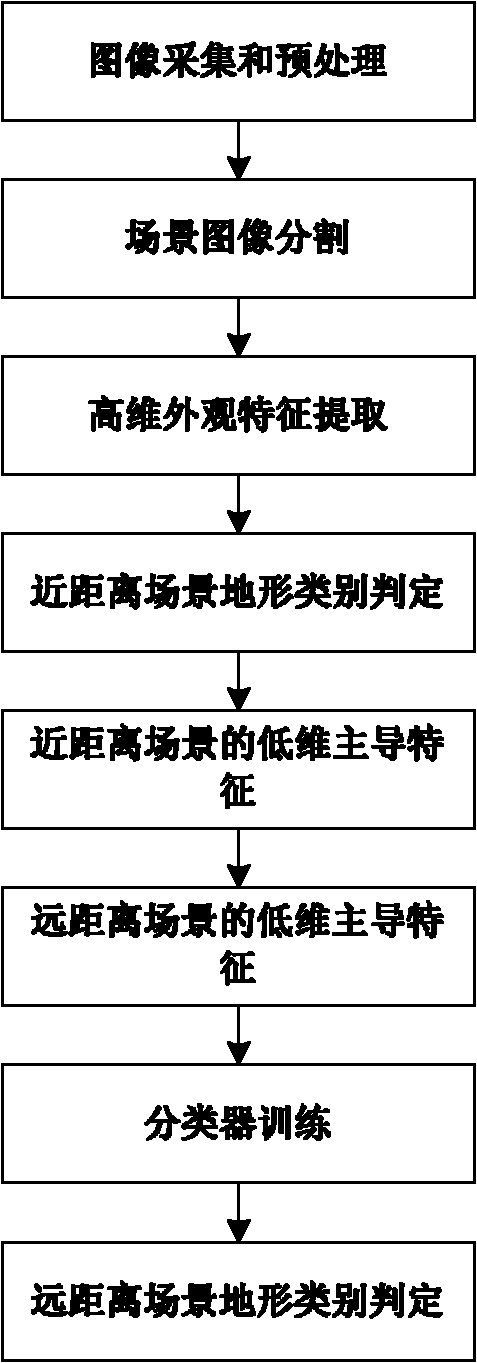Method for adaptively detecting remote obstacle
A self-adaptive detection and long-distance technology, applied in the field of self-adaptive detection of long-distance obstacles, can solve the problems of classification effect, increase computational complexity, lack of feature contribution, etc., to improve accuracy and stability, and quickly adapt to The effect of scene change, simplified classifier model
Inactive Publication Date: 2010-08-25
SHANGHAI JIAO TONG UNIV
View PDF3 Cites 23 Cited by
- Summary
- Abstract
- Description
- Claims
- Application Information
AI Technical Summary
Problems solved by technology
However, this method relies on a large amount of sample data. The selection of sample data will have a significant impact on the classification effect, and the extracted feature dimension is too high, which increases the computational complexity and lacks the discussion of feature contribution.
In addition, this method does not study how the system adaptively selects the optimal features for obstacle detection in the current scene, so it is difficult to meet the following requirements for visual navigation of mobile robots in outdoor unstructured environments:
Method used
the structure of the environmentally friendly knitted fabric provided by the present invention; figure 2 Flow chart of the yarn wrapping machine for environmentally friendly knitted fabrics and storage devices; image 3 Is the parameter map of the yarn covering machine
View moreImage
Smart Image Click on the blue labels to locate them in the text.
Smart ImageViewing Examples
Examples
Experimental program
Comparison scheme
Effect test
Embodiment
the structure of the environmentally friendly knitted fabric provided by the present invention; figure 2 Flow chart of the yarn wrapping machine for environmentally friendly knitted fabrics and storage devices; image 3 Is the parameter map of the yarn covering machine
Login to View More PUM
 Login to View More
Login to View More Abstract
The invention discloses a method for adaptively detecting a remote obstacle in the technical field of robots. The method comprises the following steps of: acquiring an image and preprocessing the image; dividing area and performing super-pixel division processing; performing high-dimensional external feature extraction; obtaining topographic types of each super-pixel of a close scene area; obtaining low-dimensional leading features of the super-pixels of a close scene; obtaining the low-dimensional leading features of the super-pixels of a remote scene; performing Adaboost classifier training; and inputting the low-dimensional leading features of the super-pixels of the remote scene area into an Adaboost classifier, determining a current scene is the obstacle if the output of the Adaboost classifier is 1, and determining the current scene is the ground if the output of the Adaboost classifier is not 1. The method has the advantages of realizing the adaptive extraction of detection features of the obstacle, simplifying a classifier model, simultaneously reducing the influence of the multimode distribution of the obstacle and type ambiguity caused by random feature superposition on detection results, and improving obstacle detection accuracy and stability.
Description
technical field The invention relates to a detection method in the technical field of robots, in particular to an adaptive detection method for long-distance obstacles. Background technique Obstacle detection is a key problem to be solved in the visual navigation of mobile robots in outdoor unstructured environments, and it is a prerequisite for subsequent path planning and action execution. At present, due to the lack of low-cost and long-distance obstacle detection methods, most obstacle detection methods are short-distance obstacle detection methods based on stereo vision or lidar. However, the myopic nature of this obstacle perception will directly or indirectly cause the robot to produce inefficient path planning results and even fail in navigation tasks. In recent years, with the development of artificial intelligence and other disciplines and the self-learning ability of robots has received greater attention in the field of robotics, the long-distance obstacle detec...
Claims
the structure of the environmentally friendly knitted fabric provided by the present invention; figure 2 Flow chart of the yarn wrapping machine for environmentally friendly knitted fabrics and storage devices; image 3 Is the parameter map of the yarn covering machine
Login to View More Application Information
Patent Timeline
 Login to View More
Login to View More IPC IPC(8): G01C11/06G06K9/66
Inventor 刘成良屠珺苑进王明军
Owner SHANGHAI JIAO TONG UNIV
Features
- R&D
- Intellectual Property
- Life Sciences
- Materials
- Tech Scout
Why Patsnap Eureka
- Unparalleled Data Quality
- Higher Quality Content
- 60% Fewer Hallucinations
Social media
Patsnap Eureka Blog
Learn More Browse by: Latest US Patents, China's latest patents, Technical Efficacy Thesaurus, Application Domain, Technology Topic, Popular Technical Reports.
© 2025 PatSnap. All rights reserved.Legal|Privacy policy|Modern Slavery Act Transparency Statement|Sitemap|About US| Contact US: help@patsnap.com



